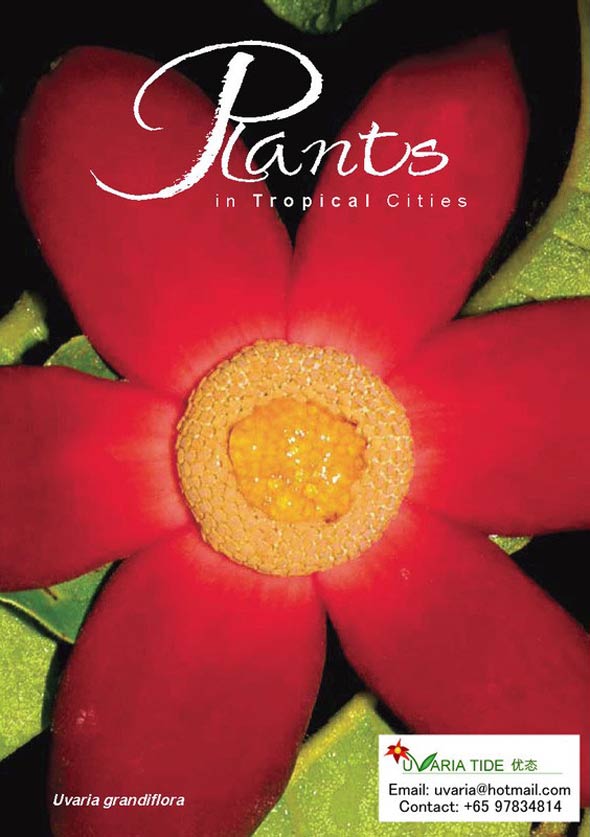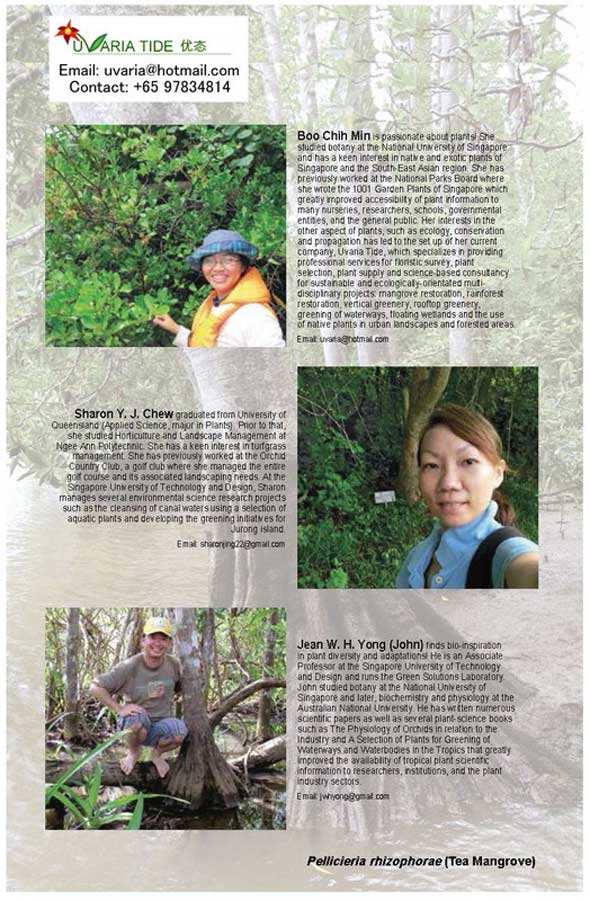“Plants in Tropical Cities by Boo Chin Min, Sharon YJ Chew & Jean WH Yong, privately published in 2014, Uvaria Tide ([email protected]; contact 65-9783-4814).

“The campaign to turn Singapore into a Garden City, then into a City in a Garden, resulted in hundreds of flowering plants being brought in from all over the world. Keeping track of these introductions was a problem until the National Parks Board published 1001 Garden Plants in Singapore in 2003, now in its third edition. In 2014 Boo Chih Min, the lead author in the first two editions, privately published Plants in Tropical Cities (together with Sharon YJ Chew and Jean WH Yong) after she left NParks.

“This new, improved and updated volume is crammed with nearly 2,800 species within its 990 pages.
“Nearly all the plants grown along Singapore’s roadsides, parks, park connectors, gardens, etc. are included in this book. There is no problem locating the plants if you know their scientific names. After all the main text lists these names in alphabetical order. Each plant is accompanied by colour photographs, usually 4.5×5.0 cm in size. Though a wee bit small, they do serve the purpose. Symbols are used to denote plant habits, information on care and maintenance, suitability for special habitats, etc. Family and common names are also given
“Towards the end of the book is a section on 19 categories that include herbs, climbers, shrubs, trees, etc. If you can identify the category, search through the much shorter lists and look at the photos to try recognise your plant. However, the accompanying photos are much smaller than those of the main text. The categories allow you to choose the plants suitable for your needs. What the authors should consider is to include an index on the common names used in the book in future editions.
“Admittedly the book is not an identification manual. Still, I instinctively refer to it whenever I come across an unfamiliar plant, even to the extent of flipping through the pages. After all, how many illustrated plant books are available on species grown in Singapore? Indeed I find satisfaction using it to confirm the identification of a new plant once I get a clue of its identity.
“I strongly recommend the inclusion of keys to the identification of the genera and/or species in future editions. This can be published as a separate addendum as otherwise the book may become too bulky. Dichotomous or polytomous keys can be used to separate plant habits (herbs, climbers, trees), leaf structures (simple, compound), flower colours, fruits (dry, fleshy), etc. This would make Plants in Tropical City complete. After all, we need to first try find out the names of new and unfamiliar plants by ourselves, failing which we try other sources…
“For those interested in obtaining a copy, the book is sold in selected nurseries and the more popular bookshops.
“The retail price of the book is S$60 per copy although you may get a discount at certain nurseries. Check out this LINK for more information.”
YC Wee
Singapore
20th July 2016








